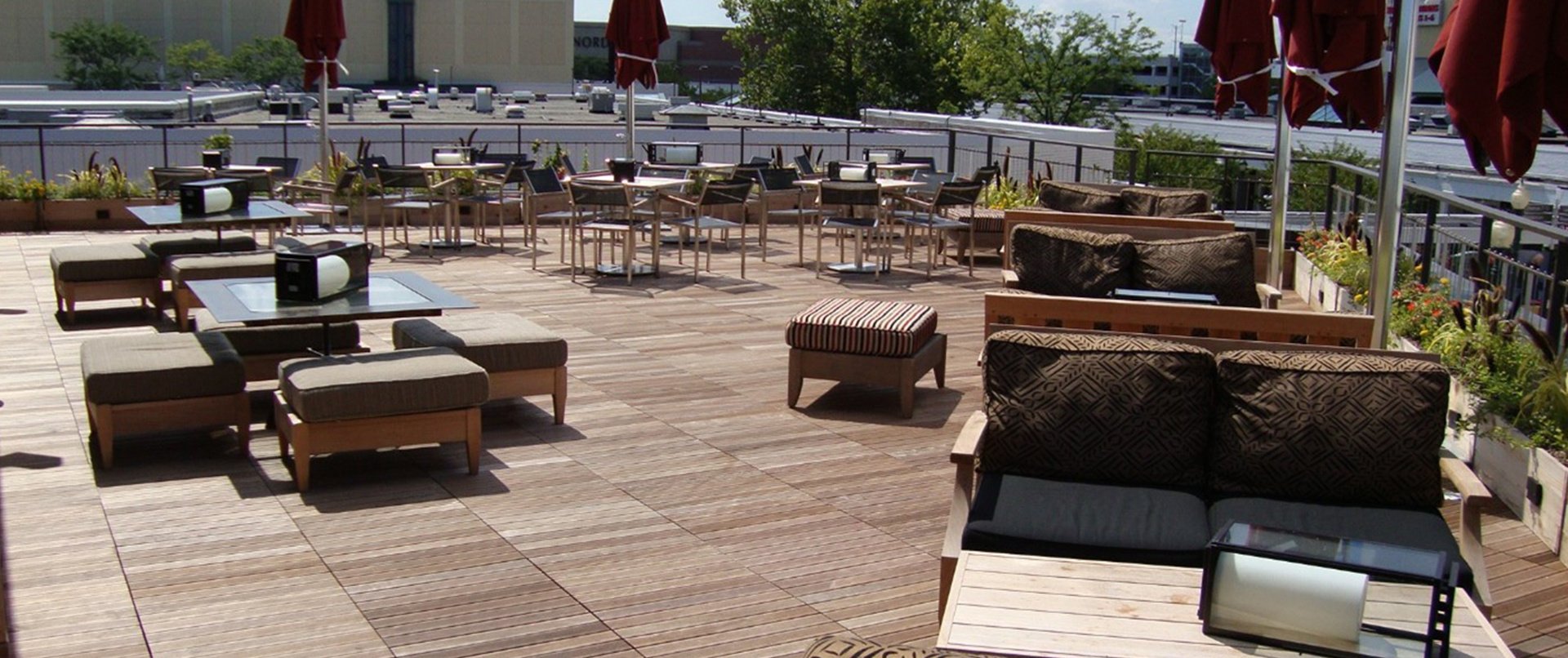Biophilic design principles help humans connect with nature without leaving their own sturdy structures. If you've been to an outdoor restaurant with plants wrapped around a railing or a gigantic tree in the middle of a gazebo, then you've seen biophilic elements in action.
Because many businesses see opportunities for eco-friendly structures, biophilic architecture is becoming more mainstream and fostering human-nature relationships. Discover some biophilic design principles and learn why this type of architectural format is important to our everyday lives.
What are biophilic design principles?
Biophilic design concepts offer simple ways to combine natural elements and artificial structures. You will find biophilic design elements relating to interior design, architecture, and outdoor urban renewal projects.
The overall goal is to provide sensory experiences that bring the natural world into the human world as focal points to explore our relationship with nature.
Simply putting a potted plant on an outdoor dining table does not mean you have biophilic design at play. Environmental features must blend together to form a cohesive presentation that considers the entire space.
Some natural elements you might see in biophilic design are:
- Water features: A splashing fountain or a koi pond are both relevant design choices.
- Natural materials used in structures: Wood is the most obvious option here, but natural materials also include stone, cork, wool, cotton, or bamboo.
- Natural light: Look for skylights and large windows that reduce the need for more light fixtures to save on electrical costs.
- Green walls: This refers to having long, hanging plants that grow on the outside of walls and windows. You might see vines and creeping plants that start on the roof and work their way down.
- Natural shapes and forms: You might see natural forms everywhere in a building, like a seashell mural made out of ceramic tiles, a floral pattern in a ceiling fan, and more.
What are the benefits of biophilic design?
Biophilic design elements offer several benefits to humans interacting with these architectural landscapes.
- Improves well-being: Getting back to nature and seeing natural things reduces your blood pressure.
- Increases creativity: Working in a biophilic environment increases your creativity by up to 15 percent.
- Increases productivity: For business owners, increased productivity is a great reason to incorporate biophilic design principles into your building.
- Reduces noise pollution: Plants, wood, and cork reduce echoes and keep noise pollution to a minimum.
- Lowers the temperature: Do you want to run your air conditioning less in the summer? Consider water structures and plants in your building.
What are good examples of biophilic design?
Take a look around your city or town one day. You might see some excellent examples of biophilic design concepts that go beyond a potted plant or a seashell painting.
Many architectural firms are looking toward principles of biophilic designs to help people interact with nature in new ways while providing spaces that entertain and inspire patrons, customers, and employees.
- Austin Central Library in Texas: This jewel of Austin is a LEED Platinum-certified library building designed to have sustainability for 100 years.
- Partners Healthcare in Massachusetts: This healthcare company's 82,000-square-foot headquarters boasts a LEED Gold building with an outdoor rooftop patio covered in wooden tiles and surrounded by plants.
- Children's Hospital of Orange County, California: The rooftop deck features natural elements like wooden tiles, plants, and a bear sculpture to help children heal at this state-of-the-art facility.
- Celadon Apartments in Downtown San Diego: The 15th-floor terrace is covered in wood tiles overseen by the many potted plants in stone beds.
- University of California at Berkeley: The courtyard of this research institution is covered in concrete pavers but also with large wooden tiles and green roof spaces that make dramatic color swings as you walk through the area.
Ready to start your next project?
We'd love to help you incorporate biophilic design concepts and elements into your next project. Want to learn more? We have a continuing education program perfect for interior designers, architects, and city planners.
At Bison, we specialize in creating unique rooftop experiences for all types of buildings – from apartment communities and hotels to workspaces and restaurants. If you need help designing or sourcing your next project, let's talk.
Important Notice: Bison Innovative Products recommends that all rooftop deck systems should be installed by a licensed contractor with at least 2 years of proven experience. Plans/designs for a rooftop deck should be reviewed by a safety/structural engineer before commencing construction. The roof must be able to safely carry the static and live load weights of the rooftop deck, and any amenities added along with the appropriate density of any insulation to resist crushing and damaging the waterproof membrane. Adding items such as hardscaping features, hot tubs, or pools to a rooftop deck requires additional guidance and oversight from an engineer. Property owners should research and abide by any building codes and other regulations to obtain the required permits prior to having a rooftop deck installed. Please read all product specifications posted on Bisonip.com to review all information prior to any installation.
.png?width=100&height=100&name=BisonIP-logo-PMS425-2023%20(1).png)



